Plot
Humanity has found a new ally in their ongoing war against the Beetle Hive, a tenacious species called the Mrdini. In order to better understand each other, some humans and 'Dinis are raised together from childhood; one such family are the children of Damia and Afra Lyon, powerful psychic Talents of the Raven-Lyon clan who form the backbone of humanity's teleportation network. The two species' common enemy, the expansionist Beetle aliens, are once again encroaching on inhabited territory, necessitating that despite their youth, Damia's Children must become the last line of defense for both Human and 'Dini.
Damia's Children tells the first half of a story which is continued in Lyon's Pride .
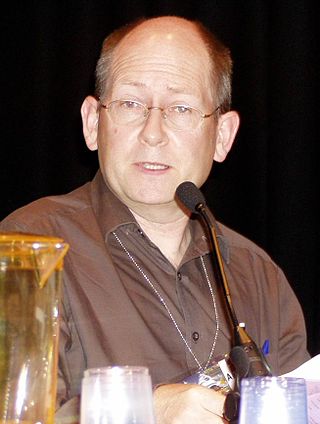
Stephen Baxter is an English hard science fiction author. He has degrees in mathematics and engineering.
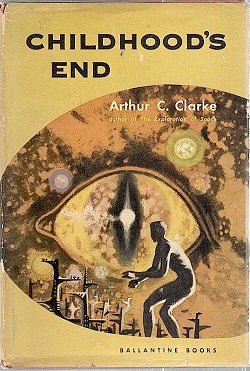
Childhood's End is a 1953 science fiction novel by the British author Arthur C. Clarke. The story follows the peaceful alien invasion of Earth by the mysterious Overlords, whose arrival begins decades of apparent utopia under indirect alien rule, at the cost of human identity and culture.

Apocalyptic and post-apocalyptic fiction is a subgenre of science fiction in which the Earth's civilization is collapsing or has collapsed. The apocalypse event may be climatic, such as runaway climate change; astronomical, such as an impact event; destructive, such as nuclear holocaust or resource depletion; medical, such as a pandemic, whether natural or human-caused; end time, such as the Last Judgment, Second Coming or Ragnarök; or any other scenario in which the outcome is apocalyptic, such as a zombie apocalypse, cybernetic revolt, technological singularity, dysgenics or alien invasion.

Octavia Estelle Butler was an American science fiction author and a multiple recipient of the Hugo and Nebula awards. In 1995, Butler became the first science-fiction writer to receive a MacArthur Fellowship.
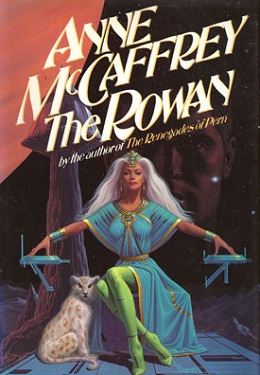
The Rowan (1990) is a science fiction novel by American writer Anne McCaffrey, the first book in The Tower and the Hive series. It is set in the universe of the "Pegasus" trilogy, against a backdrop of a technologically advanced society in which telepathy, psychokinesis and other psychic talents have become scientifically accepted and researched. Telekinetic and telepathic powers are used to communicate and teleport spaceships through space, thus avoiding the light barrier and allowing for the colonization of other planetary systems.

The Lensman series is a series of science fiction novels by American author E. E. "Doc" Smith. It was a runner-up for the 1966 Hugo award for Best All-Time Series, losing to the Foundation series by Isaac Asimov.
The Uplift Universe is a fictional universe created by American science fiction writer David Brin. A central feature in this universe is the process of biological uplift.

The Faded Sun trilogy is a series of science fiction novels by American writer C.J. Cherryh and set in her Alliance–Union universe. The series comprises the three novels The Faded Sun: Kesrith (1978), The Faded Sun: Shon'jir (1978), and The Faded Sun: Kutath (1979), published by DAW Books. They were republished as an omnibus edition in the UK in 1987 and in the U.S. in 2000.
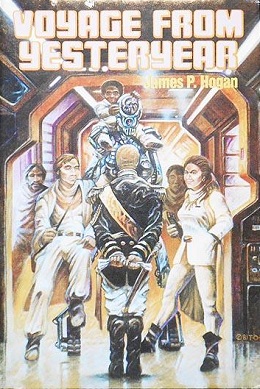
Voyage from Yesteryear is a 1982 science fiction novel by British writer James P. Hogan.

Protector is a 1973 science fiction novel by American writer Larry Niven, set in his Known Space universe. It was nominated for the Hugo in 1974, and placed fourth in the annual Locus poll for that year.
The True Game is the collective name for a series of three related trilogies of short novels by Sheri S. Tepper. The novels explore the Lands of the True Game, a portion of a planet explored by humanity somewhere in the future. These novels straddle the genres of both fantasy and science-fiction, although this does not become apparent until quite late in the overall story.
George Reginald Turner was an Australian writer and critic, best known for the science fiction novels written in the later part of his career. His first science fiction story and novel appeared in 1978, when he was in his early sixties. By this point, however, he had already achieved success as a mainstream novelist, including a Miles Franklin Award, and as a literary critic.
The Xeelee Sequence is a series of hard science fiction novels, novellas, and short stories written by British science fiction author Stephen Baxter. The series spans billions of years of fictional history, centering on humanity's future expansion into the universe, its intergalactic war with an enigmatic and supremely powerful Kardashev Type V alien civilization called the Xeelee, and the Xeelee's own cosmos-spanning war with dark matter entities called Photino Birds. The series features many other species and civilizations that play a prominent role, including the Squeem, the Qax, and the Silver Ghosts. Several stories in the Sequence also deal with humans and posthumans living in extreme conditions, such as at the heart of a neutron star (Flux), in a separate universe with considerably stronger gravity (Raft), and within eusocial hive societies (Coalescent).
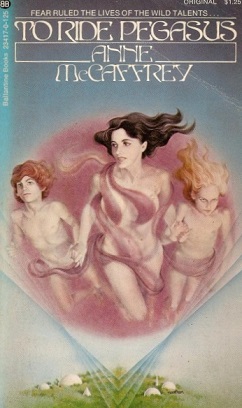
To Ride Pegasus is a collection of four science fiction stories by American writer Anne McCaffrey, published by Ballantine Books in 1973 and later under its Del Rey imprint. "To Ride Pegasus" is also the title of the novella, the first of the four stories that was original to the collection.
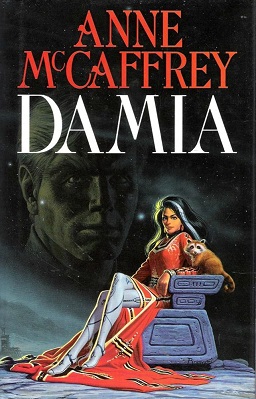
Damia is a 1992 science fiction novel by American writer Anne McCaffrey; it is the sequel to The Rowan, and the second book of The Tower and the Hive series.

Lyon's Pride is a 1994 novel by Anne McCaffrey, which continues the storyline begun in Damia's Children. It was published by Ace in the US/Canada, and Bantam in the UK.
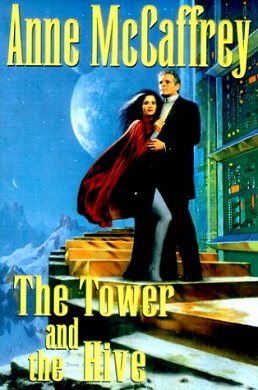
The Tower and the Hive is a 1999 science fiction novel by American writer Anne McCaffrey, the concluding volume of a five-book series also referred to as The Tower and Hive series.
The Mrdini are a fictional extraterrestrial species from the Rowan/Talent series by Anne McCaffrey. They first appear in the novel Damia.

Ancient astronauts have been addressed frequently in science fiction and horror fiction. Occurrences in the genres include:
This is a list of works by American science fiction and fantasy author Anne McCaffrey, including some cowritten with others or written by close collaborators.














